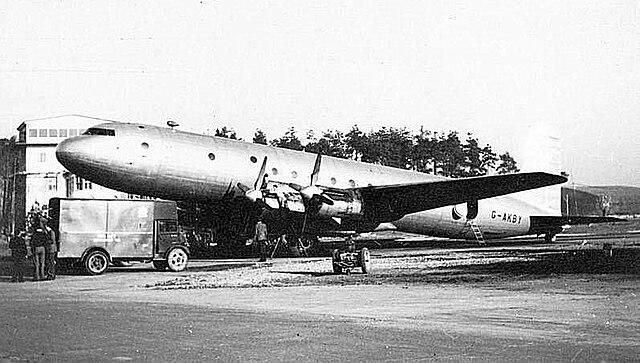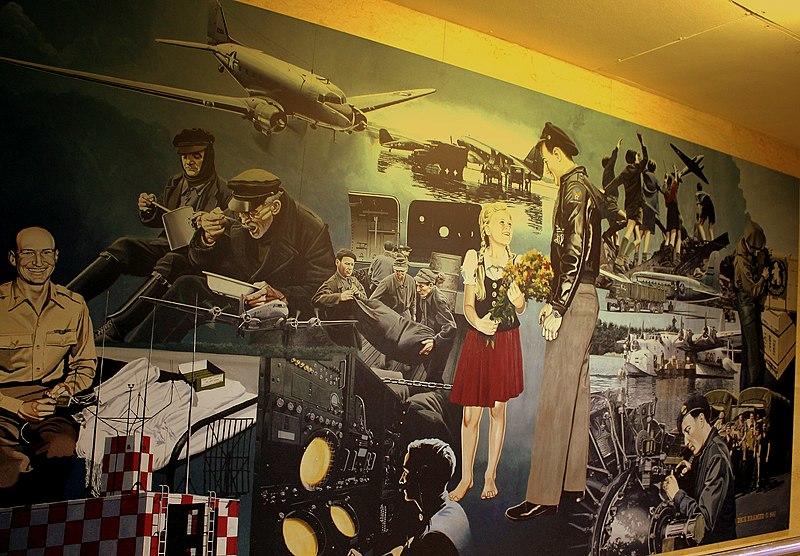Chapters
- How Was the Division of Germany Related to the Berlin Blockade?
- Why Caused the Berlin Blockade?
- How Did the Allies Respond to the Blockade?
- What Stories Came Out of the Berlin Blockade?
- How Did the Berlin Blockade Affect the Cold War?
- What Challenges Were Faced During the Operation?
- International Cooperation and Solidarity
- The Legacy of the Airlift
- Conclusion
Did you know that the major powers didn't fight each other directly during the Cold War? Instead of direct confrontation, there were lots of political battles and smaller wars fought by other countries for them. One of the most important early examples of this was the Berlin Blockade and Airlift which took place between 1948 and 1949.
This event would begin to show how vastly different the Soviet Union and the Western Allies were in their beliefs and would set the stage for how the Cold War would continue. Keep reading below to find out more about this fascinating and dark period in history!

How Was the Division of Germany Related to the Berlin Blockade?
After the Allies victory in World War II, Germany would go on to be divided into four different occupation zones - each of which was controlled by a different authority (The United States, The United Kingdom, The Soviet Union, and France). However, that wasn't the end of the matter. Berlin, which was right in the middle of the Soviet area, was essentially turned into a small version of this big split as different areas of the city were divided between the countries that were in charge.

Why Caused the Berlin Blockade?
The Western Allies, aiming to boost Germany's post war economy then introduced a new currency -the Deutsche Mark. This step aimed to help revive the economy, but the Soviet Union saw it differently. Basically, they perceived it as a direct threat to their influence in the region, especially in their controlled sectors.
In response to this, the Soviets initiated the Berlin Blockade - a strategic move where they blocked all land and water access routes to West Berlin. This area, controlled by the Western Allies, was deep within the Soviet-occupied zone of Germany.
By cutting off these essential routes, the Soviet Union aimed to force the West to abandon their plans for the Deutsche Mark and to gain more control over Berlin. Due to this, most of the people in West Berlin were suddenly without access to critical supplies like food, medicine, and fuel, leading to a serious humanitarian crisis.
How Did the Allies Respond to the Blockade?
After these events, the Western Allies, spearheaded by the United States and the United Kingdom, would initiate the Berlin Airlift in response to the blockade. To succeed, the operation required extraordinary planning and execution, as West Berlin needed approximately 4,500 tons of supplies daily to survive.
The airlift continued for over a year, with planes landing in Berlin at regular intervals, day and night. During this time, both British and American aeroplanes would fly over Berlin around 250,000 times or more, all whilst dropping food and other much-needed items like fuel for vehicles.

What Stories Came Out of the Berlin Blockade?
The "Candy Bomber" story, where a pilot dropped sweets to Berlin's children, is one of many heartening stories from the airlift. Additionally, Berliners who were struggling with severe shortages, often eagerly anticipated the supply of planes. However, these airlifts did more than just bring necessary items also - they symbolized unity and hope.
For example, a particularly touching tale involves local children who managed to send a chocolate bar to the American pilots as a token of thanks. This act was more than a kind gesture and showed the deep emotional impact the airlift had on the people of Berlin.

How Did the Berlin Blockade Affect the Cold War?
Unfortunately, the Berlin Airlift sparked a fire for a significant escalation in Cold War tensions. Why? Well, Its success was a huge diplomatic victory for the Western Allies and also a significant setback for the Soviet Union. In addition to this, it also highlighted the West's resolve to resist Soviet expansionism, which would not be taken well by the Soviets.
What Challenges Were Faced During the Operation?
The logistical challenges of the Berlin Airlift were immense. For starters, the pilots involved had to navigate difficult flight paths and deal with awful weather conditions - showcasing remarkable skill and determination in the process.
Alongside this, the operation required meticulous coordination and the commitment of thousands of military and civilian personnel - a massive logistical undertaking. Incredibly, American C-47 and C-54 transport aeroplanes, along with British transports, would go on to fly over 92 million miles during the operation. However, the operation did have its costs too - 17 American and 8 British aircraft were lost during this time, leading to a total of 101 fatalities.
International Cooperation and Solidarity
The Berlin Airlift showcased effective international collaboration, as pilots and support staff from different Allied nations joined forces. This effort was a practical display of teamwork, essential for overcoming the challenges of delivering supplies to Berlin.
It highlighted the potential for diverse nations to work together in crisis situations, setting a practical example for future cooperative endeavours. This operation, while focused on immediate relief, also hinted at the formation of structured alliances like NATO, underscoring the importance of coordinated action in global affairs. All in all, the airlift's success was a testament to the capability and benefits of multinational cooperation in facing difficult challenges.
The Legacy of the Airlift
The Berlin Airlift was more than just a key event in the Cold War - it was a groundbreaking moment in global humanitarian efforts. This operation showed that coordinated efforts, without resorting to military action, could achieve important goals.
Beyond just delivering supplies, the Airlift also deeply touched the lives of many Berliners and those who were involved in the mission. In addition to this, it brought out a sense of global cooperation and would go a long way in breaking down political and national barriers across Europe and beyond.

Conclusion
In summary, the Berlin Blockade and Airlift (1948-1949) was a significant Cold War event which also highlighted the ideological clash between the Soviet Union and the Western Allies. Following Germany's post-WWII division, the Soviet Blockade of Berlin aimed to curb Western influence as much as they could.
In response to this, the Western Allies' Berlin Airlift would go on to demonstrate exceptional logistical skills, delivering essential supplies to isolated West Berlin. Unfortunately, this operation escalated Cold War tensions. However, the airlift's success, despite its huge challenges, was a critical diplomatic victory for the West and a key moment in international cooperation and humanitarian efforts during this tense period.









